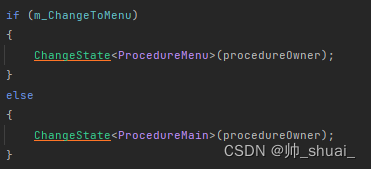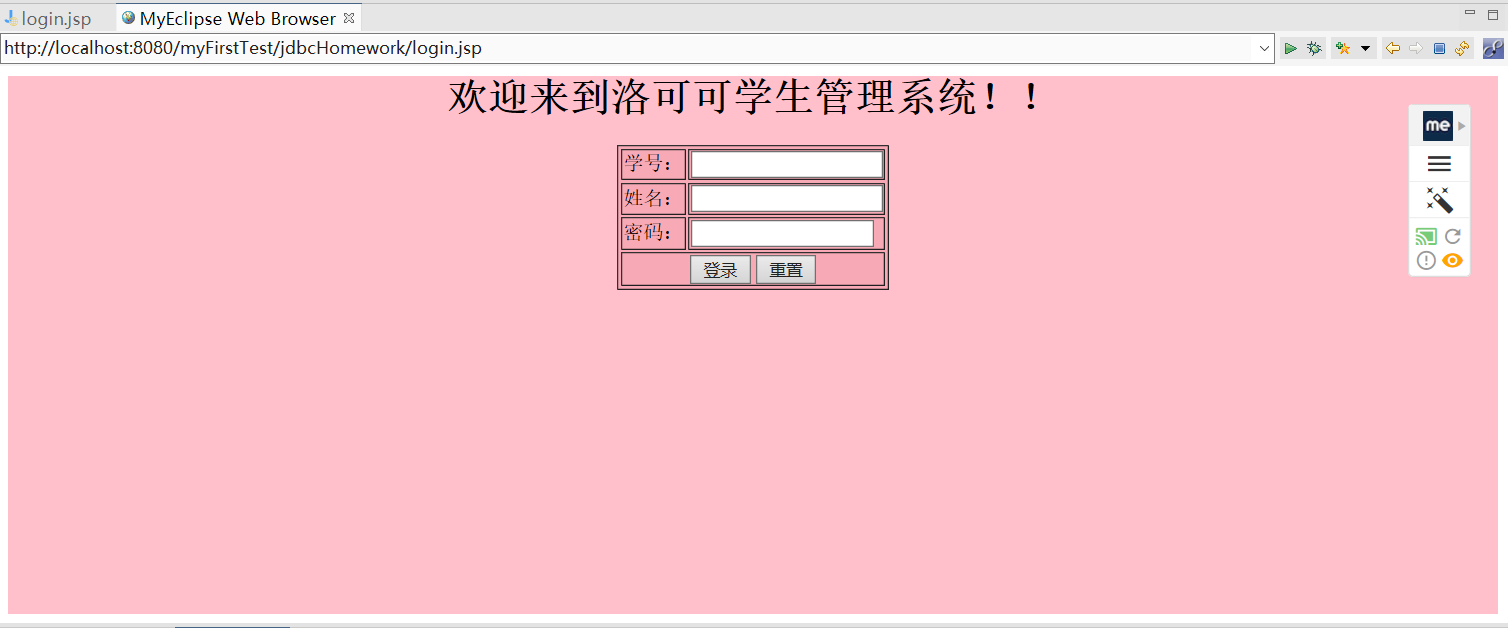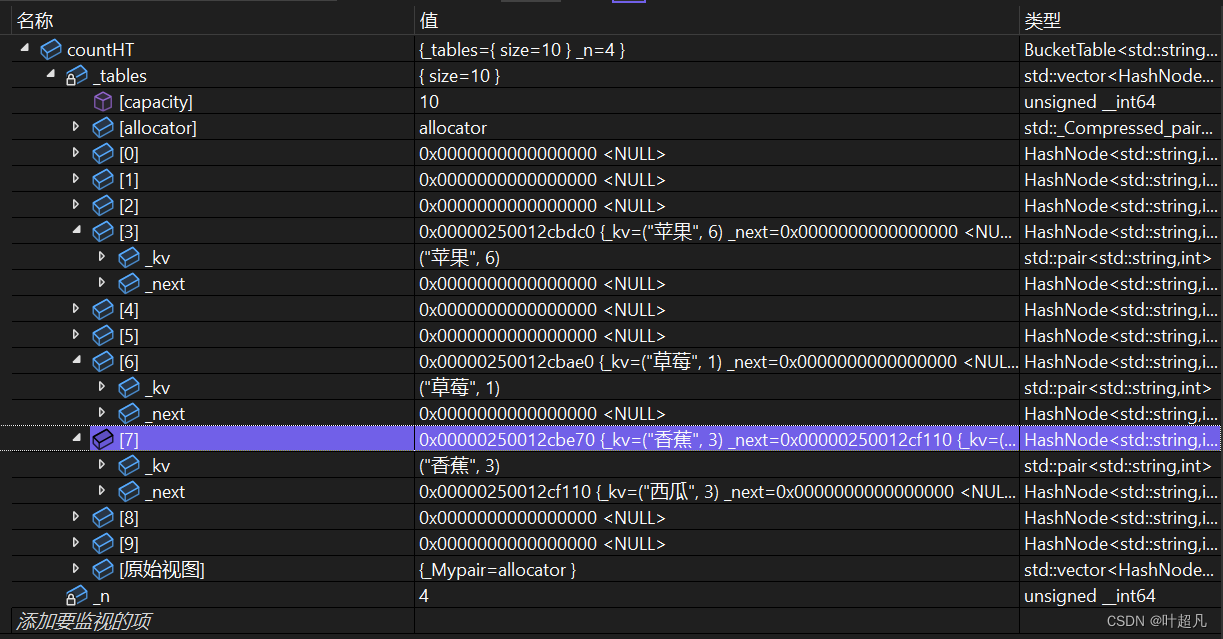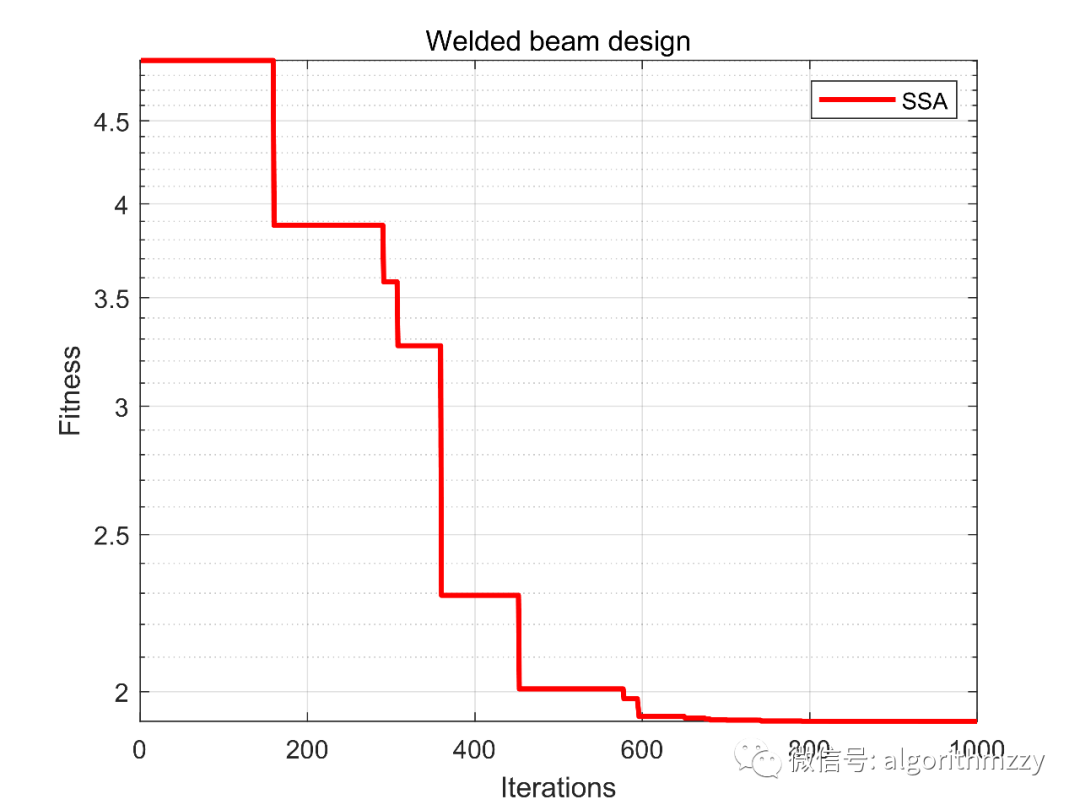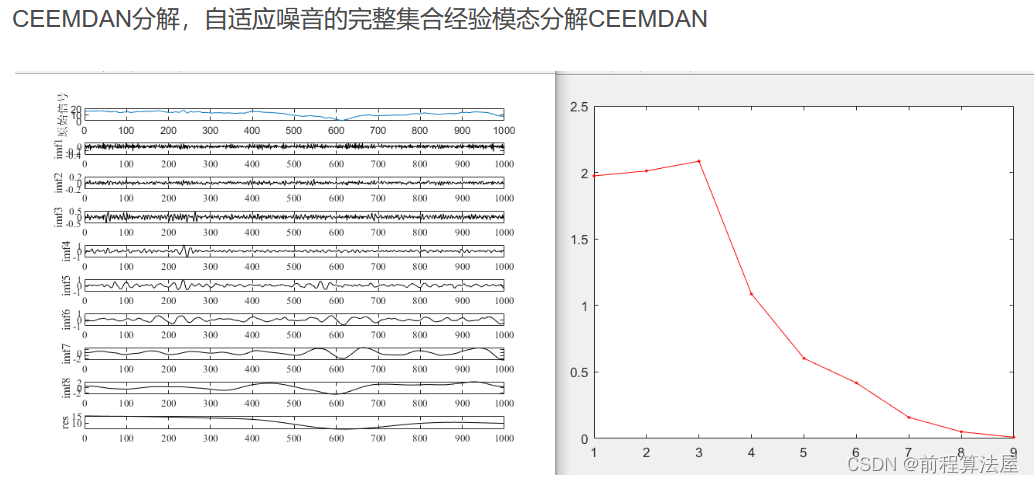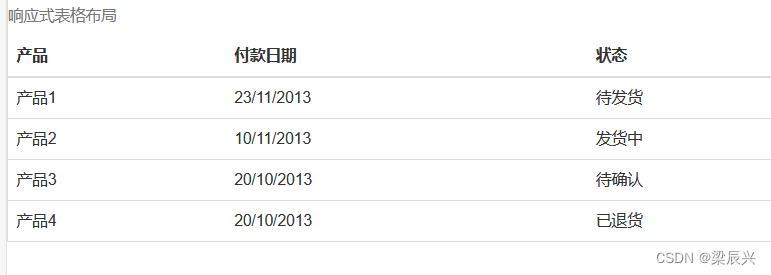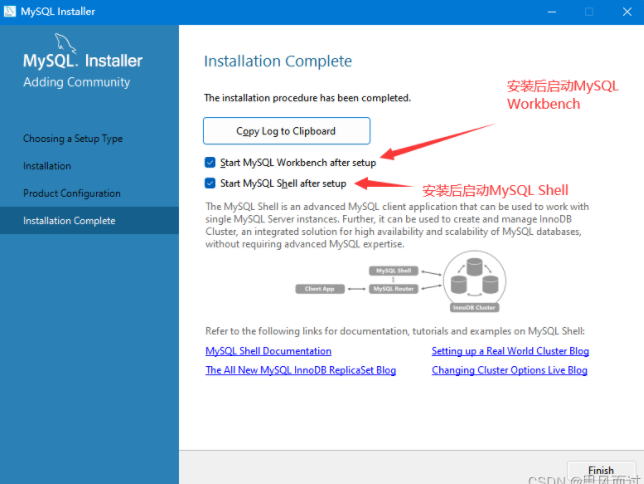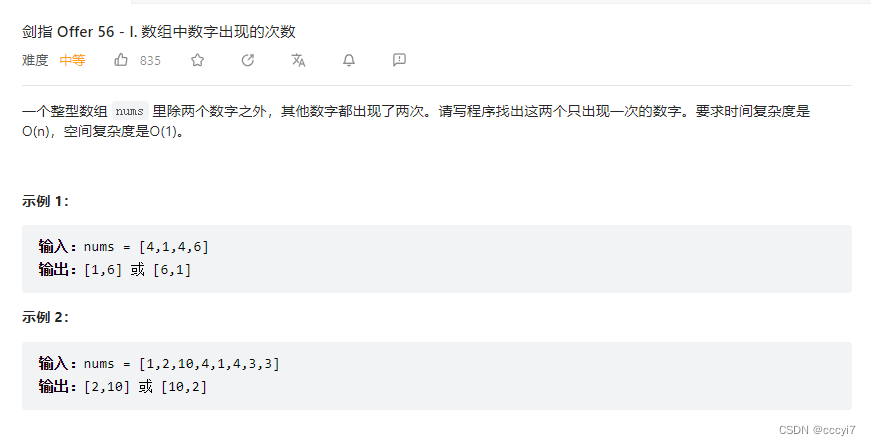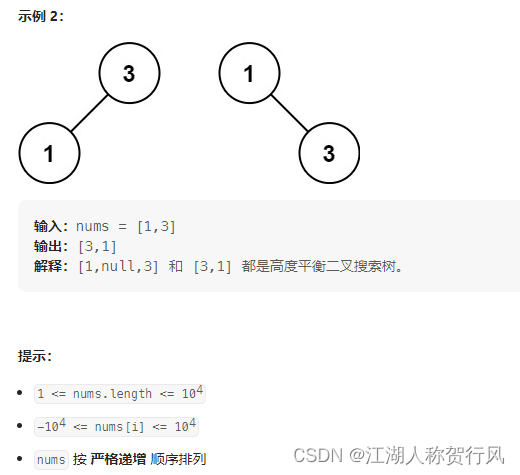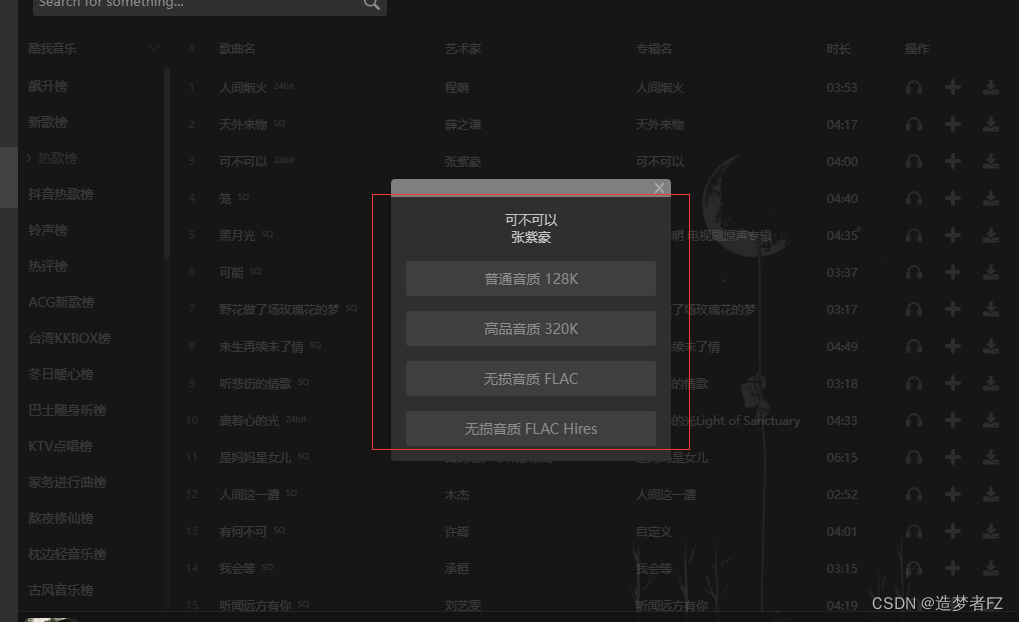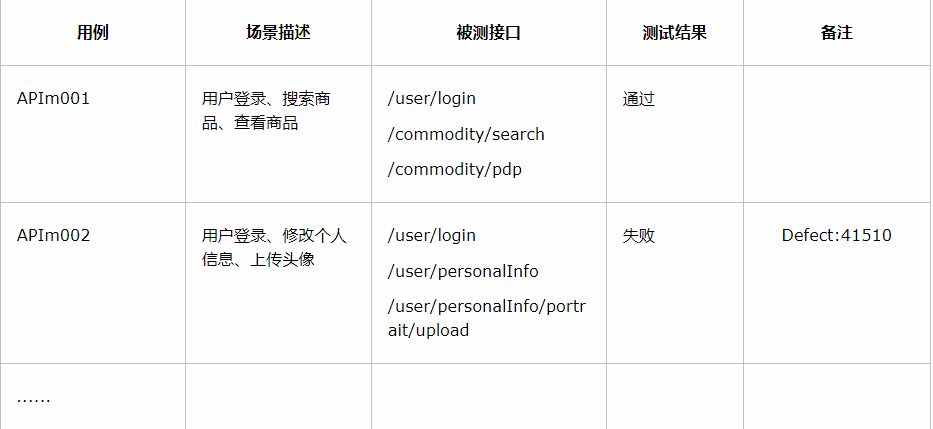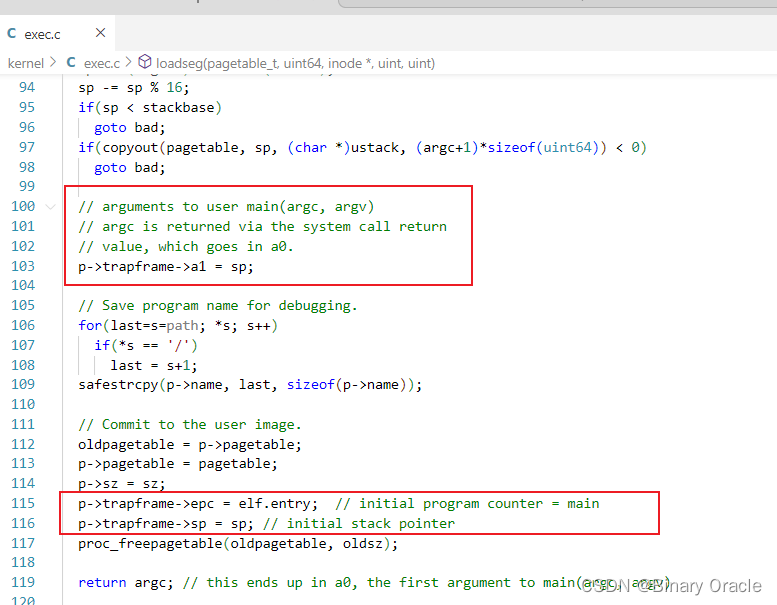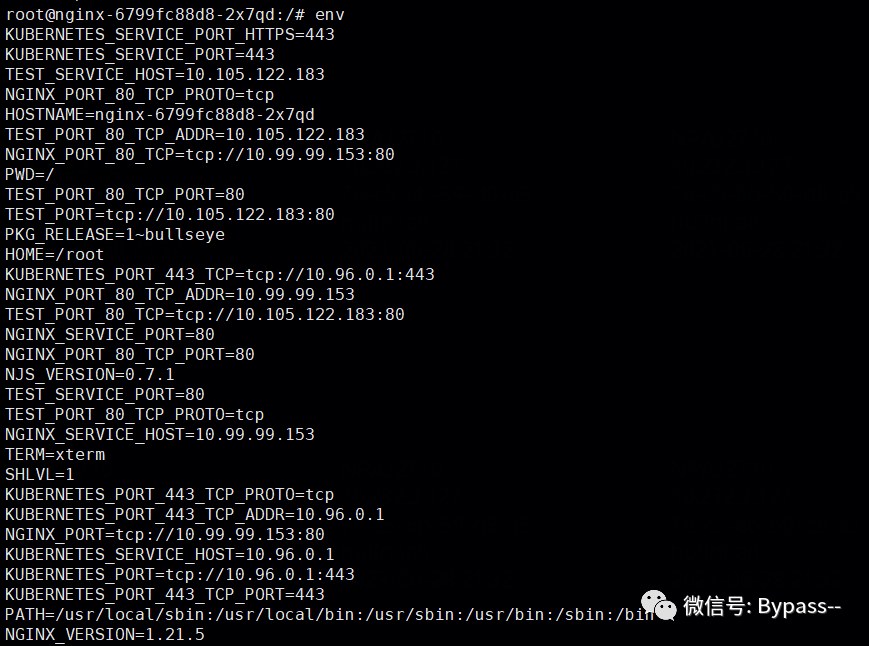多线程是多任务处理的一种特殊形式,多任务处理允许让电脑同时运行两个或两个以上的程序。一般情况下,两种类型的多任务处理:基于进程和基于线程。
- 基于进程的多任务处理是程序的并发执行。
- 基于线程的多任务处理是同一程序的片段的并发执行。
多线程程序包含可以同时运行的两个或多个部分。这样的程序中的每个部分称为一个线程,每个线程定义了一个单独的执行路径。
本教程假设您使用的是 Linux 操作系统,我们要使用 POSIX 编写多线程 C++ 程序。POSIX Threads 或 Pthreads 提供的 API 可在多种类 Unix POSIX 系统上可用,比如 FreeBSD、NetBSD、GNU/Linux、Mac OS X 和 Solaris。
创建线程
下面的程序,我们可以用它来创建一个 POSIX 线程:
#include <pthread.h> pthread_create (thread, attr, start_routine, arg)
在这里,pthread_create 创建一个新的线程,并让它可执行。下面是关于参数的说明:
| 参数 | 描述 |
|---|---|
| thread | 指向线程标识符指针。 |
| attr | 一个不透明的属性对象,可以被用来设置线程属性。您可以指定线程属性对象,也可以使用默认值 NULL。 |
| start_routine | 线程运行函数起始地址,一旦线程被创建就会执行。 |
| arg | 运行函数的参数。它必须通过把引用作为指针强制转换为 void 类型进行传递。如果没有传递参数,则使用 NULL。 |
创建线程成功时,函数返回 0,若返回值不为 0 则说明创建线程失败。
终止线程
使用下面的程序,我们可以用它来终止一个 POSIX 线程:
#include <pthread.h> pthread_exit (status)
在这里,pthread_exit 用于显式地退出一个线程。通常情况下,pthread_exit() 函数是在线程完成工作后无需继续存在时被调用。
如果 main() 是在它所创建的线程之前结束,并通过 pthread_exit() 退出,那么其他线程将继续执行。否则,它们将在 main() 结束时自动被终止。
实例
以下简单的实例代码使用 pthread_create() 函数创建了 5 个线程,每个线程输出"Hello Runoob!":
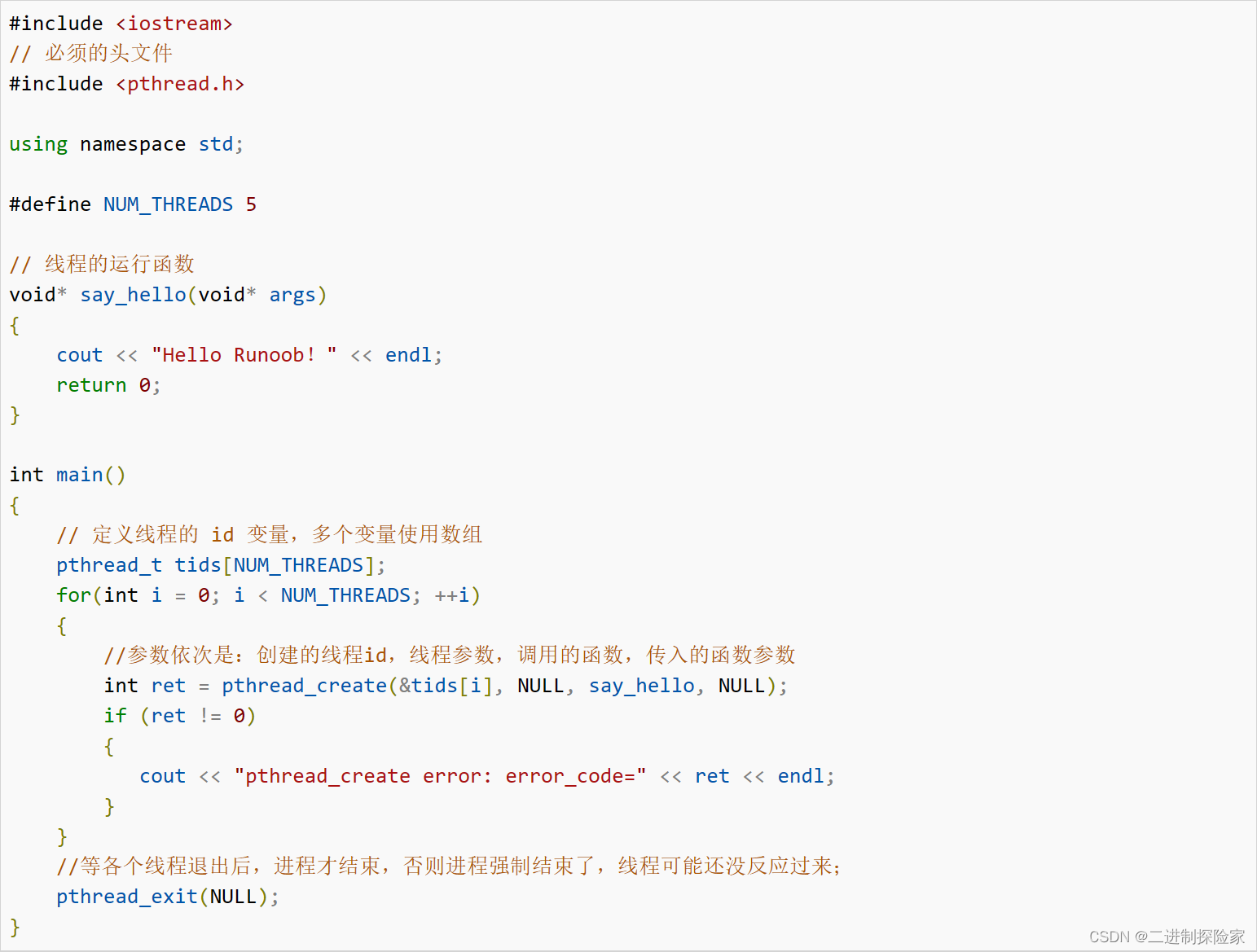
使用 -lpthread 库编译下面的程序:
$ g++ test.cpp -lpthread -o test.o
现在,执行程序,将产生下列结果:
$ ./test.o Hello Runoob! Hello Runoob! Hello Runoob! Hello Runoob! Hello Runoob!
以下简单的实例代码使用 pthread_create() 函数创建了 5 个线程,并接收传入的参数。每个线程打印一个 "Hello Runoob!" 消息,并输出接收的参数,然后调用 pthread_exit() 终止线程。

现在编译并执行程序,将产生下列结果:
$ g++ test.cpp -lpthread -o test.o $ ./test.o main() : 创建线程, 0 main() : 创建线程, 1 Hello Runoob! 线程 ID, 0 main() : 创建线程, Hello Runoob! 线程 ID, 21 main() : 创建线程, 3 Hello Runoob! 线程 ID, 2 main() : 创建线程, 4 Hello Runoob! 线程 ID, 3 Hello Runoob! 线程 ID, 4
向线程传递参数
这个实例演示了如何通过结构传递多个参数。您可以在线程回调中传递任意的数据类型,因为它指向 void,如下面的实例所示:
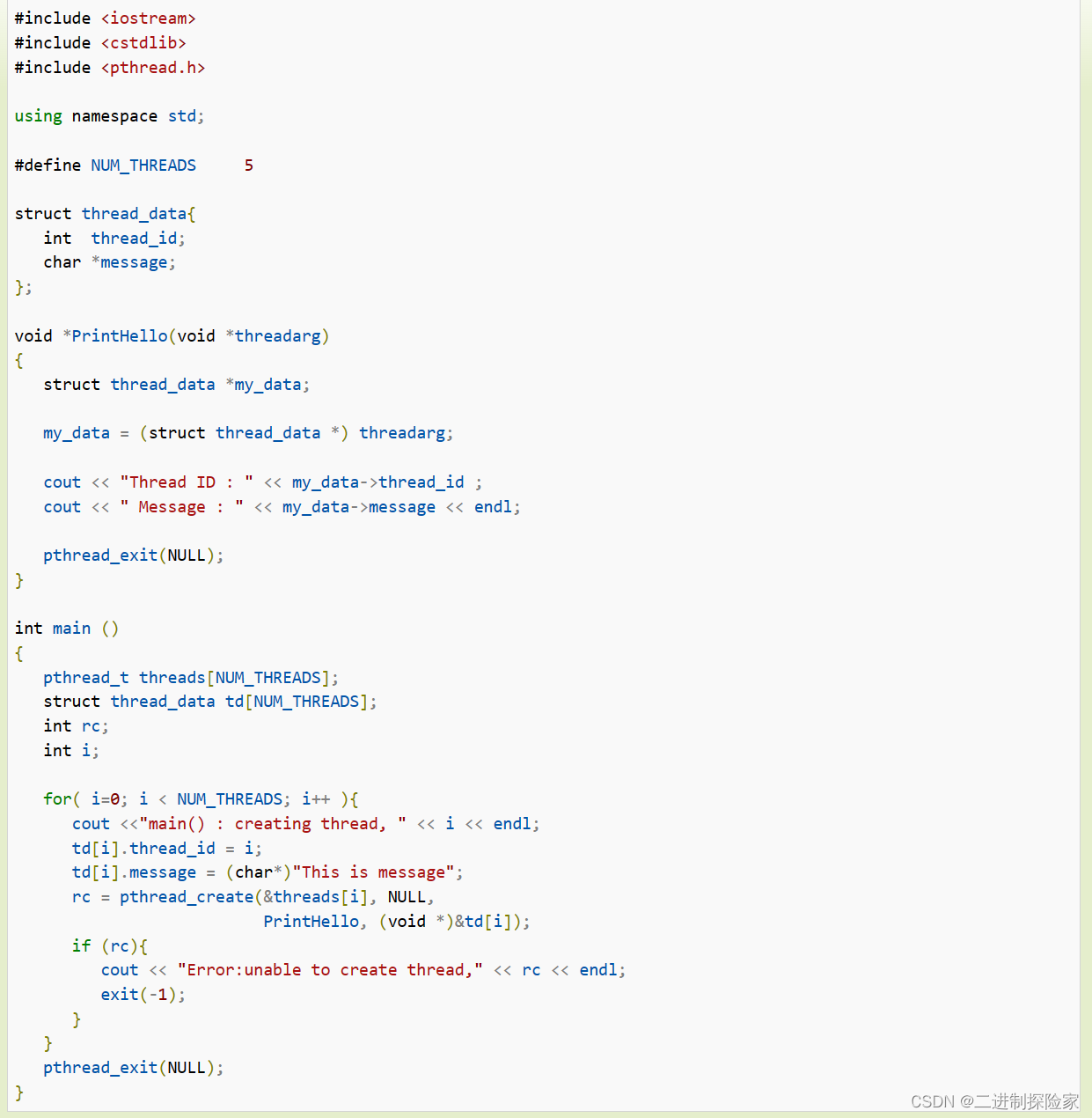
当上面的代码被编译和执行时,它会产生下列结果:
$ g++ -Wno-write-strings test.cpp -lpthread -o test.o $ ./test.o main() : creating thread, 0 main() : creating thread, 1 Thread ID : 0 Message : This is message main() : creating thread, Thread ID : 21 Message : This is message main() : creating thread, 3 Thread ID : 2 Message : This is message main() : creating thread, 4 Thread ID : 3 Message : This is message Thread ID : 4 Message : This is message
连接和分离线程
我们可以使用以下两个函数来连接或分离线程:
pthread_join (threadid, status) pthread_detach (threadid)
pthread_join() 子程序阻碍调用程序,直到指定的 threadid 线程终止为止。当创建一个线程时,它的某个属性会定义它是否是可连接的(joinable)或可分离的(detached)。只有创建时定义为可连接的线程才可以被连接。如果线程创建时被定义为可分离的,则它永远也不能被连接。
这个实例演示了如何使用 pthread_join() 函数来等待线程的完成。

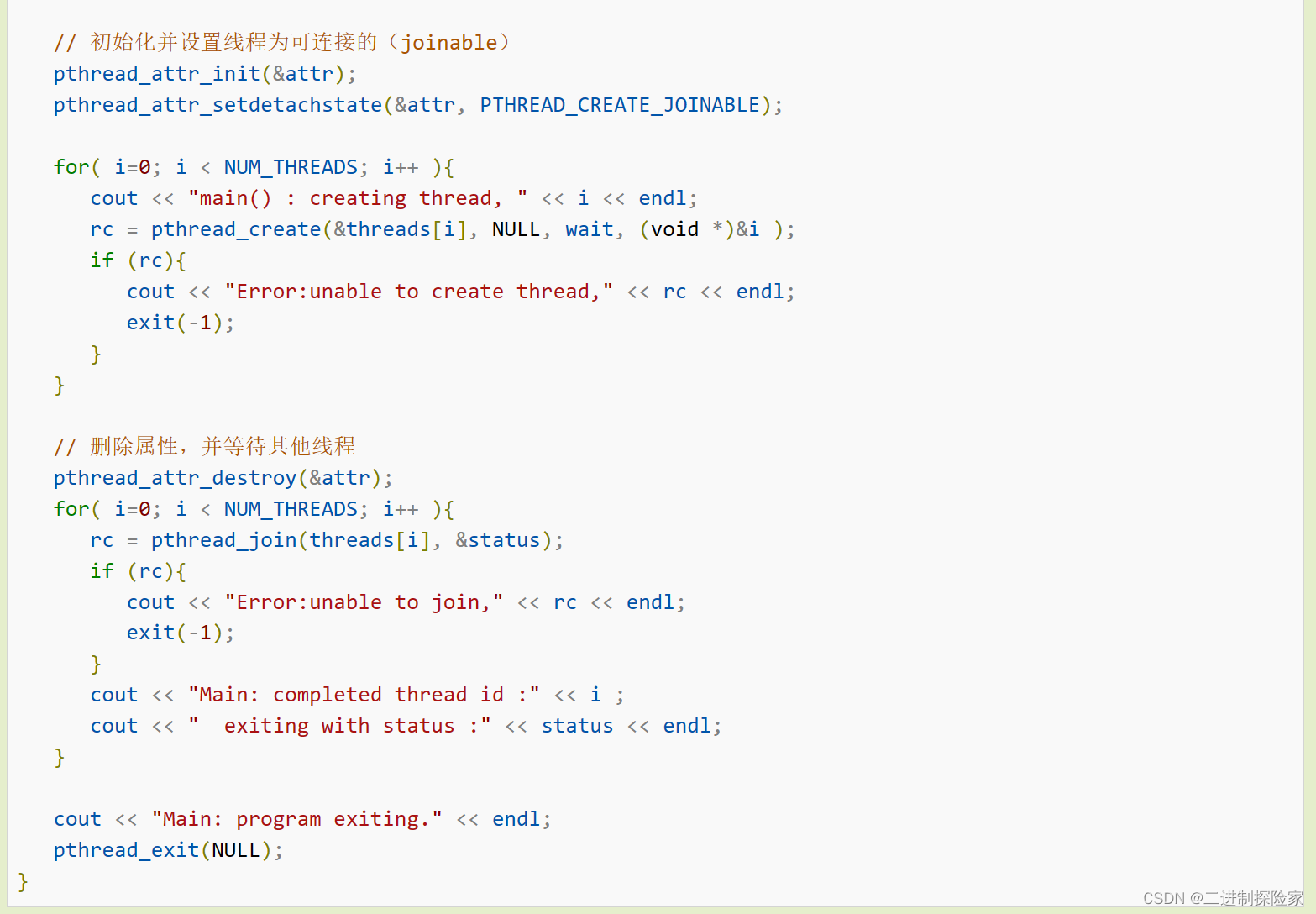
当上面的代码被编译和执行时,它会产生下列结果:
main() : creating thread, 0 main() : creating thread, 1 main() : creating thread, 2 main() : creating thread, 3 main() : creating thread, 4 Sleeping in thread Thread with id : 4 ...exiting Sleeping in thread Thread with id : 3 ...exiting Sleeping in thread Thread with id : 2 ...exiting Sleeping in thread Thread with id : 1 ...exiting Sleeping in thread Thread with id : 0 ...exiting Main: completed thread id :0 exiting with status :0 Main: completed thread id :1 exiting with status :0 Main: completed thread id :2 exiting with status :0 Main: completed thread id :3 exiting with status :0 Main: completed thread id :4 exiting with status :0 Main: program exiting.
std::thread
C++ 11 之后添加了新的标准线程库 std::thread,std::thread 在 <thread> 头文件中声明,因此使用 std::thread 时需要包含 在 <thread> 头文件。
之前一些编译器使用 C++ 11 的编译参数是 -std=c++11:
g++ -std=c++11 test.cpp
std::thread 默认构造函数,创建一个空的 std::thread 执行对象。
#include<thread> std::thread thread_object(callable)
一个可调用对象可以是以下三个中的任何一个:
- 函数指针
- 函数对象
- lambda 表达式
定义 callable 后,将其传递给 std::thread 构造函数 thread_object。
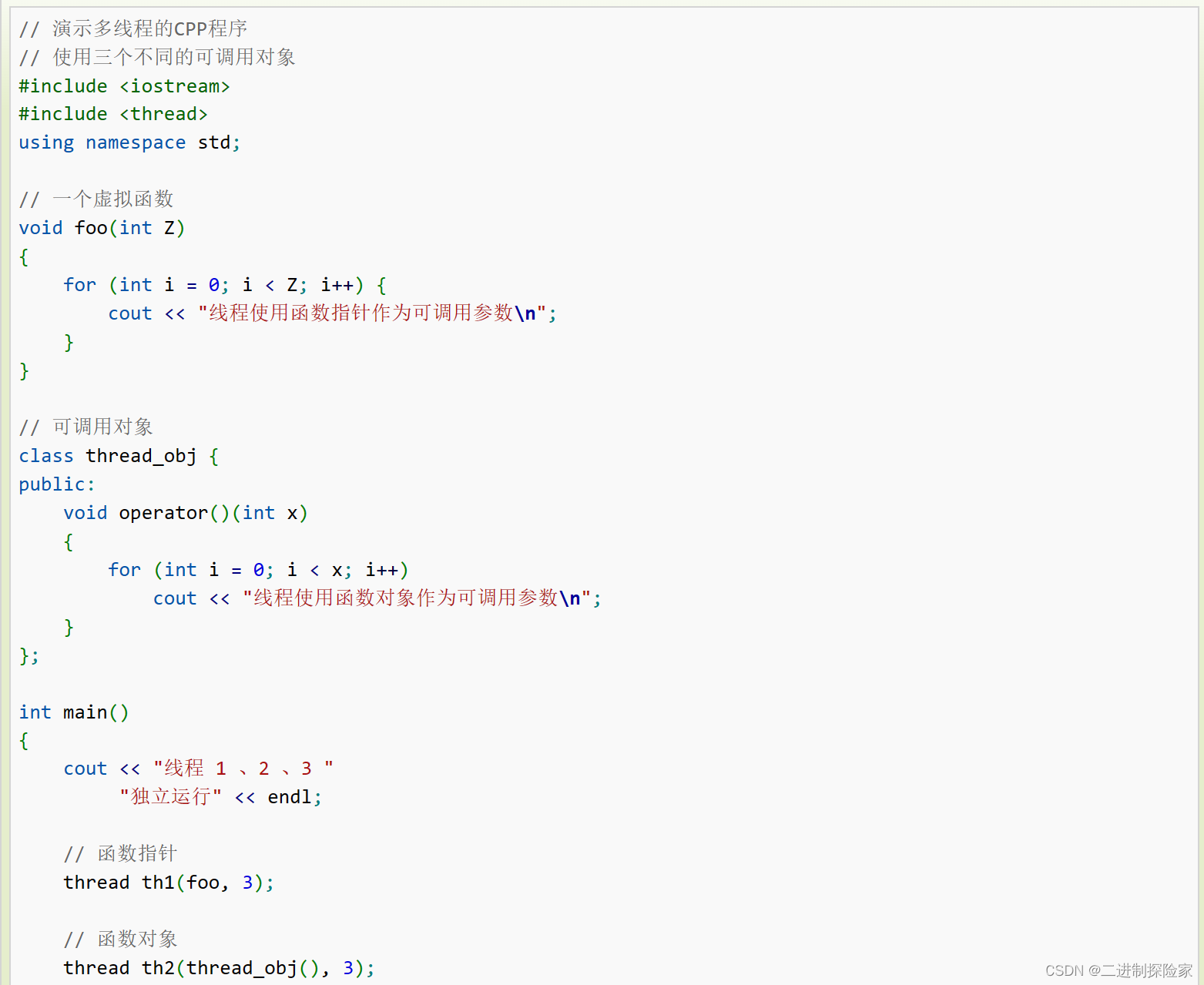

使用 C++ 11 的编译参数 -std=c++11:
g++ -std=c++11 test.cpp
当上面的代码被编译和执行时,它会产生下列结果:
线程 1 、2 、3 独立运行 线程使用函数指针作为可调用参数 线程使用函数指针作为可调用参数 线程使用函数指针作为可调用参数 线程使用函数对象作为可调用参数 线程使用函数对象作为可调用参数 线程使用函数对象作为可调用参数 线程使用 lambda 表达式作为可调用参数 线程使用 lambda 表达式作为可调用参数 线程使用 lambda 表达式作为可调用参数
其他笔记:
c++ 11 之后有了标准的线程库:
#include <iostream>
#include <thread>
std::thread::id main_thread_id = std::this_thread::get_id();
void hello()
{
std::cout << "Hello Concurrent World\n";
if (main_thread_id == std::this_thread::get_id())
std::cout << "This is the main thread.\n";
else
std::cout << "This is not the main thread.\n";
}
void pause_thread(int n) {
std::this_thread::sleep_for(std::chrono::seconds(n));
std::cout << "pause of " << n << " seconds ended\n";
}
int main() {
std::thread t(hello);
std::cout << t.hardware_concurrency() << std::endl;//可以并发执行多少个(不准确)
std::cout << "native_handle " << t.native_handle() << std::endl;//可以并发执行多少个(不准确)
t.join();
std::thread a(hello);
a.detach();
std::thread threads[5]; // 默认构造线程
std::cout << "Spawning 5 threads...\n";
for (int i = 0; i < 5; ++i)
threads[i] = std::thread(pause_thread, i + 1); // move-assign threads
std::cout << "Done spawning threads. Now waiting for them to join:\n";
for (auto &thread : threads)
thread.join();
std::cout << "All threads joined!\n";
}
之前一些编译器使用 C++11 的编译参数是 -std=c++11
g++ -std=c++11 test.cpp -lpthread
